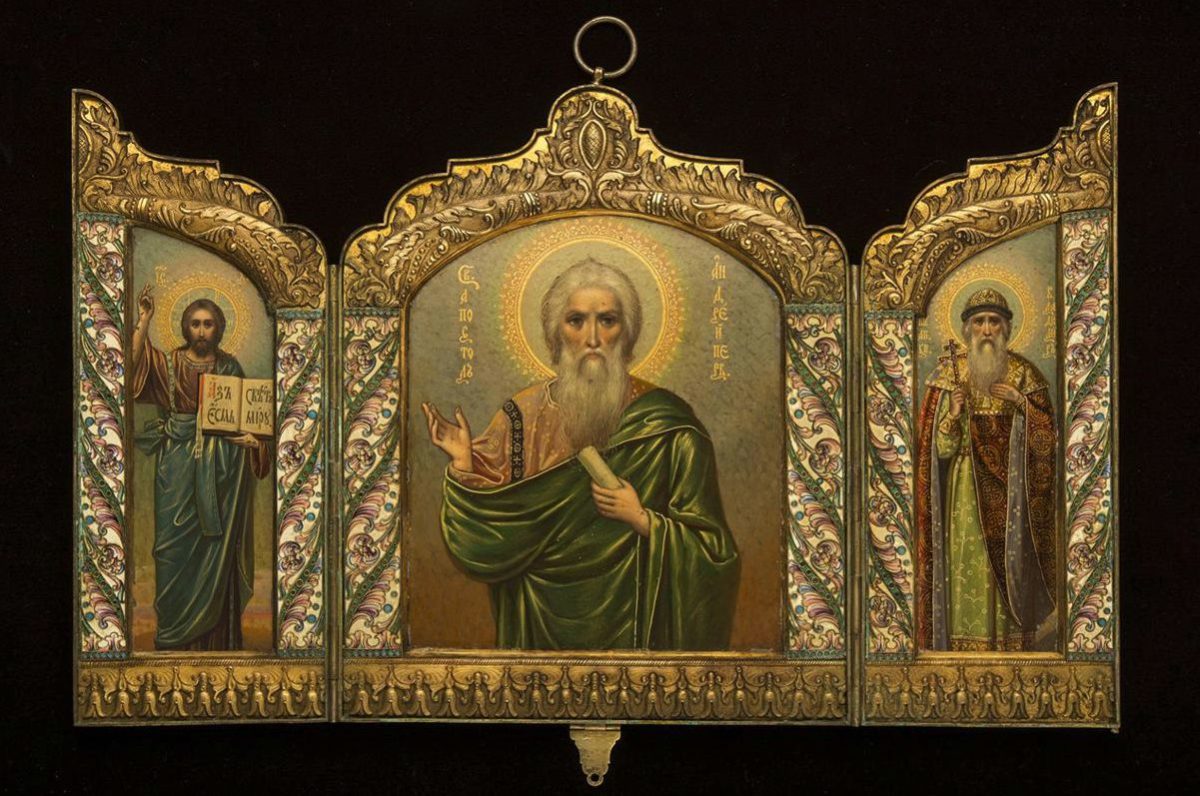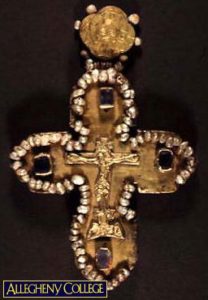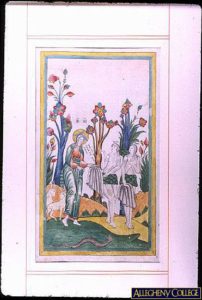
Allegheny’s Treasured Collections of Artifacts, Manuscripts Get Worldwide Exposure
Whether they are housed in the second-floor special collections area of Pelletier Library or in an academic department’s archives, Allegheny College hosts a colorful and historic treasure trove of photos and documents. But they are largely unknown to many students, alumni and researchers.
That won’t be the case anymore as the college’s Library Information and Technology Services division is making some of these iconic treasures available for viewing from anywhere in the world. An interdisciplinary team has captured and uploaded hundreds of valuable, high-quality images of these unique collections to the JSTOR Forum and eventually to the Digital Public Library of America. It is hoped that many more of Allegheny’s valuable collections will find their way to the digital world in the near future.
During the past three summers, a team of Allegheny scholars, librarians and technicians have photographed, created metadata for, digitized and uploaded images of several collections, the first of which has been made available in the digital public library. In August, the DPLA began sharing 89 images from the prized Hulmer Collection. The collection of Russian religious artifacts dating from the 16th through the 20th centuries was donated to the college by the late Eric C. Hulmer, a well-known art restorer.
“The goal is to provide a platform to share many more collections like the Hulmer Collection through the digital public library,” says Richard A. Holmgren, the college’s vice president for information services and assessment. “We have a number of collections, including the Tarbell documents, which we’d like to make more easily discoverable and more widely available.”
The project has been made possible through a grant from the Council of Independent Colleges’ Consortium on Digital Resources, which is funded by The Andrew W. Mellon Foundation. “We have had a team engaged with the consortium since its inception in 2015,” Holmgren says. “Now that we have gotten over the technical hurdles necessary to allow the DPLA to accept collections from Allegheny, my expectation is that other image collections will be added to the DPLA in the coming months.”

Allegheny’s interest in this project was spurred by a desire to make its collections better known. Soon after its acquisition in 1997, images of the Hulmer Collection became available online through a website created by Professor Amelia Carr’s art history students and funded by the Charles E. Culpeper Foundation. Eric Hulmer had acquired the St. Nicolas icon through Armand Hammer Galleries in New York. Because this icon was findable online, it was able to be shown in a 2011–13 exhibition, “Rublev to Fabergé,” at Bob Jones University, for which Wendy Salmon of Chapman University reconstructed part of “the journey of Russian art and culture to America” through Hammer’s efforts. “Now, having our objects represented in the DPLA multiplies many times over the opportunities for scholarly discovery,” Carr says.
The national digital library contains more than 29 million images, texts and videos from across the United States. Educators and students can, in essence, bring history and culture to life in the classroom by accessing the DPLA database. Users also conduct genealogical and scholarly research through the free online portal.
“Many smaller colleges have historically significant documents and collections that the public hasn’t been able to find,” says Holmgren. “I think this will generate a lot of excitement, making these collections findable and accessible. It also makes it easier for faculty anywhere in the world to find materials to supplement their teaching and research.”
The Allegheny team that worked on digitizing the college’s Collections includes Dr. Carr; Helen McCullough, research and instructional technology librarian; Jane Westenfeld, research and instruction librarian; Ruth Andel ’85, college archivist; William Owen ’74, the college’s former chief photographer; Brian Kern, associate director of the library; and Nate Fralick, the digital resources librarian. The group photographed the artifacts, digitized the images, wrote identifying captions and then uploaded the images to the JSTOR Forum, from which it will be shared with the national digital library.
The Hulmer Collection includes icons of the Madonna and Child, icons of Christ, icons of saints, an Easter egg attributed to Faberge, and typological artworks juxtaposing scenes from the Old and New Testaments, as well as dozens of other artifacts. Dr. Carr has been introducing students to the collection in art history seminars since the 1990s.

Besides the Hulmer Collection, the DPLA site contains documents that pertain to Allegheny that have come from other colleges and institutions. For instance, viewers can peruse an 1854 Allegheny course catalog that came from the University of Illinois archives. Or read an anthology of stories written by Allegheny students in 1902 in a collection that was uploaded from the HathiTrust Digital Library. There are hundreds of Allegheny-related documents and vintage photos of the campus on the DPLA.
This fall, the team plans to make images of several additional artifacts and collections available through the DPLA: the Omenhausser Civil War Sketchbook, Talon Zipper Collection, Atlantic & Great Western Railroad Collection, Egyptian Hieroglyphics Book, Chinese Astronomy Book, Exercise Book for Math, and Public Images in the Merrick Digital Images Collection.
Ruth Andel is leading the project to get the Allegheny College Archives Digital Images Collection into the DPLA during the fall of 2018. “This collection is already a public Artstor collection of close to 600 images, but DPLA will give it much broader exposure,” says Andel. “We will be continually adding images to the collection as rights concerns are cleared and more images become part of the public domain.”
Main Photo Caption: Presentation Icon in the form of a triptych; Artist: K. K. (signed), Russian, 1916.